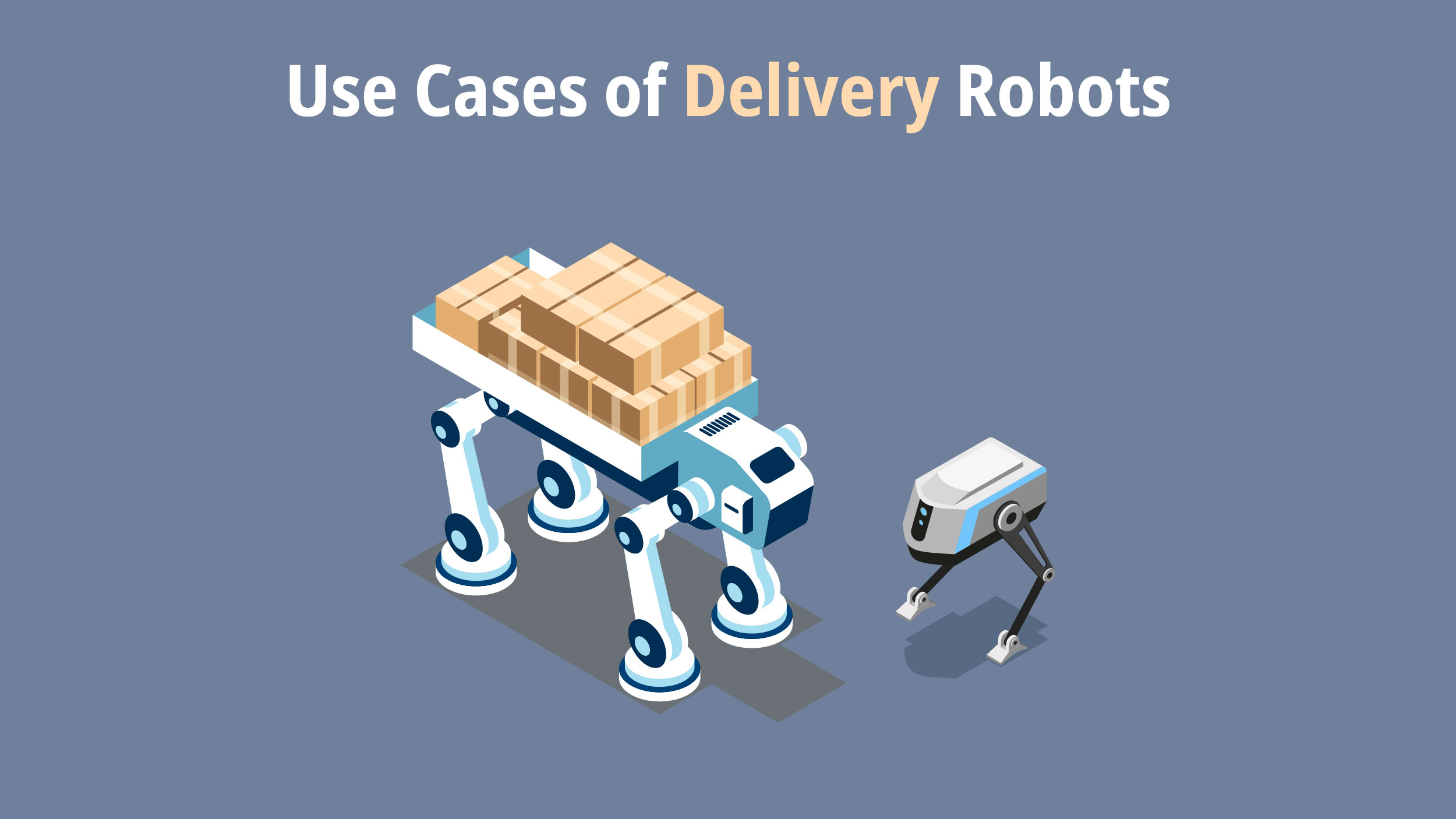In today’s fast-paced world, the demand for efficient and timely delivery services continues to rise. However, traditional delivery methods often face challenges such as traffic congestion, high costs, and limited capacity. This is where delivery robots come in as a groundbreaking solution. These autonomous robots are designed to navigate sidewalks and streets, revolutionizing the way goods are transported and delivered. Let’s learn more about it.
What are Delivery Robots?
Delivery robots are autonomous robots designed to transport goods and make deliveries. They utilize advanced technologies, such as sensors, cameras, and navigation systems, to navigate sidewalks, streets, and other designated areas. These robots are being developed and deployed by various companies to address the increasing demand for efficient and contactless delivery services. While most deliveries are currently ground-based, drone deliveries are also becoming increasingly common, with an 80% increase reported from 2021 to 2022, and an expected one million deliveries projected for 2023.
The delivery robot market is projected to reach a valuation of $2.5 billion in 2028. The food and beverage sector represents the largest segment for these robots, followed by healthcare and retail. The majority of them are capable of carrying loads up to 10kg, with smaller segments handling loads ranging from 10-50kg or more than 50kg.
Why are Delivery Robots Widely Accepted?
There are multiple reasons why delivery robots are increasingly adopted, some of the drivers for the industry are:
- Battery Technology: Advances in battery range, including the exploration of hydrogen fuel cells, impact delivery radius and ROI. Greater power requirements for heavier loads and additional features like temperature controls necessitate dynamic power management.
- Hardware Agility: Enhanced hardware and experience in diverse weather conditions enable robots to navigate challenging environments, such as snow, ice, and uneven surfaces, ensuring seamless last-mile delivery.
- Teleoperation: In unpredictable situations, teleoperation allows human intervention to navigate robots to their destination, reducing risks and ensuring successful deliveries.
- Safety Measures: Improved obstacle avoidance sensors and AI learning enable robots to maneuver through dynamic obstacles, enhancing safety and driving adoption.
- 5G Connectivity: 5G networks offer high-bandwidth connections, ensuring continuous communication between robots and operators, facilitating real-time monitoring of deliveries.
Also Read: What are Robo-Advisors? A Comprehensive Guide
Are Delivery Robots the Eco-Friendly Delivery Solution?

Delivery robots offer an environmentally friendly delivery solution for several reasons. Firstly, they operate on batteries, eliminating harmful emissions associated with fossil fuels, thereby reducing air pollution and lowering the carbon footprint of delivery operations.
Furthermore, the use of such robots can decrease the number of vehicles on the road, particularly for last-mile deliveries. Through route optimization and autonomous technology, companies can minimize traffic congestion and related emissions.
Additionally, its adoption aligns with the growing demand for sustainability and ethical consumption. As environmental concerns become more prominent, especially among younger consumers, these robots provide a convenient and eco-friendly alternative to traditional delivery methods.
How Much Does a Delivery Robot Cost?
The cost of a delivery robot varies significantly depending on factors like size, type, features, and maintenance requirements.
Typically, prices for purchasing a delivery robot range from $20,000 to $50,000, depending on its specifications. Upfront costs may include installation fees, hardware, and software expenses. Recurring expenses such as subscription fees, maintenance, and repairs should also be factored in.
Businesses should carefully consider ongoing maintenance costs in addition to the initial purchase price. Regular maintenance is crucial to ensure optimal performance and prevent costly issues in the future. Budgeting around $1,000 or more annually for maintenance is advisable.
Use Cases of Delivery Robots

Delivery robots are making their mark in various industries and settings:
- Restaurants: These robots are now utilized to transport meals from the kitchen to diners within restaurants and to deliver food to customers’ homes through partnerships with third-party delivery services like UberEats. Companies like DoorDash are also investing in robotics labs to develop the next generation of robotic delivery solutions. The rise of Robots-as-a-Service (RaaS) has made it easier for restaurants to experiment with robots while managing capital expenses effectively.
- Hotels and Resorts: These robots are employed in hotels and resorts for tasks such as delivering room service, towels, and ensuring well-stocked supply closets for housekeeping staff. They also assist in removing dirty linens. Resorts, with their controlled environment and maintained sidewalks, find delivery robots beneficial in reducing unskilled labor costs and addressing labor shortages.
- Hospitals: Hospitals have embraced its application for various purposes, including delivering fresh linens, meals, and collecting soiled items. Advancements in security and technology have expanded their role to include delivering medications from central pharmacies, especially beneficial during nursing shortages.
- College Campuses and Assisted Living Facilities: College campuses serve as ideal testing grounds for new technology, including delivery robots. These robots have been deployed in colleges to cater to the need for meal delivery outside dining halls, a trend that has continued post-COVID-19. Assisted living facilities similarly benefit from these robots, addressing the shortage of unskilled labor and providing efficient solutions in a controlled environment.
Key Takeaway
As advancements in AI, drones, and ML continue to unfold, delivery robots are poised to revolutionize the economy. It’s not far-fetched to imagine a future where you greet a robot at your door, delivering your meal or package. The integration of these cutting-edge technologies holds the potential to reshape the way goods are transported and distributed, offering convenience and efficiency like never before.




